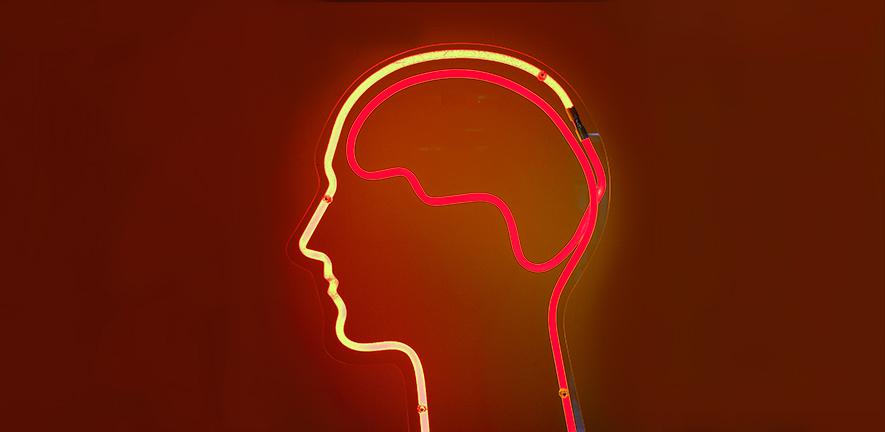
Researchers have identified two brain phenomena that may explain some of the side-effects of ketamine. Their measurements of the brain waves of sheep sedated by the drug may explain the out-of-body experience and state of complete oblivion it can cause.
Researchers have identified two brain phenomena that may explain some of the side-effects of ketamine. Their measurements of the brain waves of sheep sedated by the drug may explain the out-of-body experience and state of complete oblivion it can cause.
We think of anaesthetic drugs as just slowing everything down. That's what it looks like from the outside...but when we looked at the brain activity, it seems to be a much more dynamic process.
Jenny Morton
In a study aimed at understanding the effect of therapeutic drugs on the brains of people living with Huntington’s disease, researchers used electroencephalography (EEG) to measure immediate changes in the animals’ brain waves once ketamine - an anaesthetic and pain relief drug - was administered. Low frequency activity dominated while the sheep were asleep. When the drug wore off and the sheep regained consciousness, the researchers were surprised to see the brain activity start switching between high and low frequency oscillations. The bursts of different frequency were irregular at first, but became regular within a few minutes.
“As the sheep came round from the ketamine, their brain activity was really unusual,” said Professor Jenny Morton at the University of Cambridge’s Department of Physiology, Development and Neuroscience, who led the research. “The timing of the unusual patterns of sheep brain activity corresponded to the time when human users report feeling their brain has disconnected from their body.”
She added: “It’s likely that the brain oscillations caused by the drug may prevent information from the outside world being processed normally,”
The findings arose as part of a larger research project into Huntington’s disease, a condition that stops the brain working properly. The team want to understand why human patients respond differently to various drugs if they carry the gene for this disease. Sheep were used because they are recognised as a suitable pre-clinical model of disorders of the human nervous system, including Huntington’s disease.
Six of the sheep were given a single higher dose of ketamine, 24mg/kg. This is at the high end of the anaesthetic range. Initially, the same response was seen as with a lower dose. But within two minutes of administering the drug, the brain activity of five of these six sheep stopped completely, one of them for several minutes - a phenomenon that has never been seen before.
“This wasn’t just reduced brain activity. After the high dose of ketamine the brains of these sheep completely stopped. We’ve never seen that before,” said Morton. Although the anaesthetised sheep looked as though they were asleep, their brains had switched off. “A few minutes later their brains were functioning normally again - it was as though they had just been switched off and on.”
The researchers think that this pause in brain activity may correspond to what ketamine abusers describe as the ‘K-hole’ - a state of oblivion likened to a near-death experience, which is followed by a feeling of great serenity. The study is published today in the journal Scientific Reports.
Ketamine abusers are known to take doses many times higher than those given to the sheep in this research. It is also likely that progressively higher doses have to be taken to get the same effect. The researchers say that such high doses can cause liver damage, may stop the heart, and be fatal.
To conduct the experiment sheep were put into veterinary slings, which are commonly used to keep animals safe during veterinary procedures. Different doses of ketamine were given to 12 sheep and their brain activity recorded with EEG.
Ketamine was chosen for the study because it is widely used as a safe anaesthetic and pain-relief drug for treating large animals including dogs, horses and sheep. It is also used medically, and is known as a ‘dissociative anaesthetic’ because patients can appear awake and move around, but they don’t feel pain or process information normally - many report feeling as though their mind has separated from their body.
At lower doses ketamine has a pain-relieving effect, and its use in adult humans is mainly restricted to field situations such as frontline pain-relief for injured soldiers or victims of road traffic accidents.
“Our purpose wasn't really to look at the effects of ketamine, but to use it as a tool to probe the brain activity in sheep with and without the Huntington’s disease gene,” said Morton. “But our surprising findings could help explain how ketamine works. If it disrupts the networks between different regions of the brain, this could make it a useful tool to study how brain networks function - both in the healthy brain and in neurological diseases like Huntington’s disease and schizophrenia.”
Ketamine has recently been proposed as a new treatment for depression and post-traumatic stress disorder. Beyond its anaesthetic actions, however, very little is known about its effects on brain function.
“We think of anaesthetic drugs as just slowing everything down. That's what it looks like from the outside: the animals basically go to sleep and are unresponsive, and then they wake up very quickly. But when we looked at the brain activity, it seems to be a much more dynamic process,” said Morton.
This research was funded by CHDI Inc. It was reviewed and approved by the Ethics Committee of the University of Cambridge.
Reference
Nicol, A.U. & Morton, A.J. ‘Characteristic patterns of EEG oscillations in sheep (Ovis aries) induced by ketamine may explain the psychotropic effects seen in humans.’ Scientific Reports, June 2020. DOI: 1038/s41598-020-66023-8

The text in this work is licensed under a Creative Commons Attribution 4.0 International License. Images, including our videos, are Copyright ©University of Cambridge and licensors/contributors as identified. All rights reserved. We make our image and video content available in a number of ways – as here, on our main website under its Terms and conditions, and on a range of channels including social media that permit your use and sharing of our content under their respective Terms.




